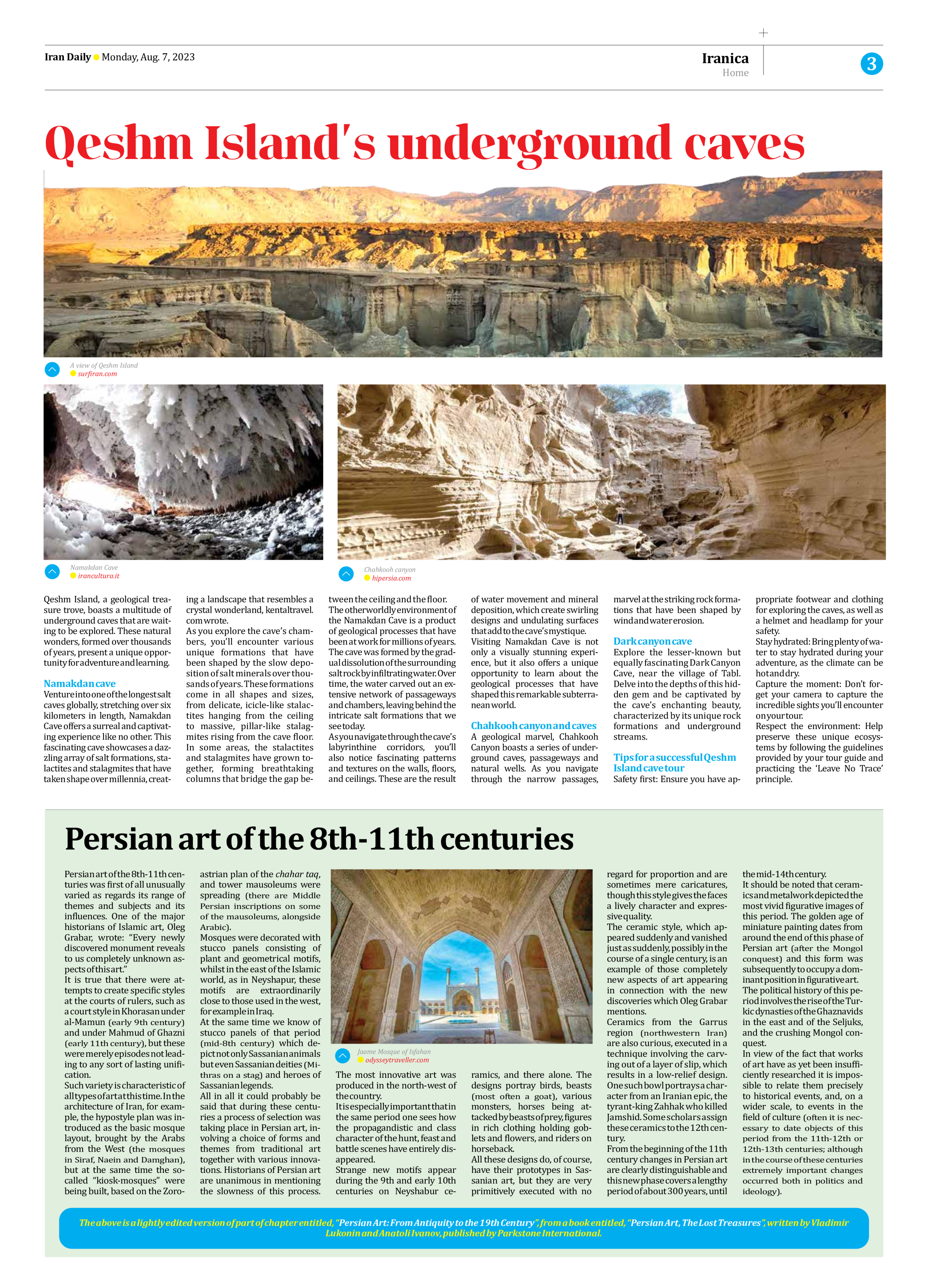
Persian art of the 8th-11th centuries
Persian art of the 8th-11th centuries was first of all unusually varied as regards its range of themes and subjects and its influences. One of the major historians of Islamic art, Oleg Grabar, wrote: “Every newly discovered monument reveals to us completely unknown aspects of this art.”
It is true that there were attempts to create specific styles at the courts of rulers, such as a court style in Khorasan under al-Mamun (early 9th century) and under Mahmud of Ghazni (early 11th century), but these were merely episodes not leading to any sort of lasting unification.
Such variety is characteristic of all types of art at this time. In the architecture of Iran, for example, the hypostyle plan was introduced as the basic mosque layout, brought by the Arabs from the West (the mosques in Siraf, Naein and Damghan), but at the same time the so-called “kiosk-mosques” were being built, based on the Zoroastrian plan of the chahar taq, and tower mausoleums were spreading (there are Middle Persian inscriptions on some of the mausoleums, alongside Arabic).
Mosques were decorated with stucco panels consisting of plant and geometrical motifs, whilst in the east of the Islamic world, as in Neyshapur, these motifs are extraordinarily close to those used in the west, for example in Iraq.
At the same time we know of stucco panels of that period (mid-8th century) which depict not only Sassanian animals but even Sassanian deities (Mithras on a stag) and heroes of Sassanian legends.
All in all it could probably be said that during these centuries a process of selection was taking place in Persian art, involving a choice of forms and themes from traditional art together with various innovations. Historians of Persian art are unanimous in mentioning the slowness of this process. The most innovative art was produced in the north-west of the country.
It is especially important that in the same period one sees how the propagandistic and class character of the hunt, feast and battle scenes have entirely disappeared.
Strange new motifs appear during the 9th and early 10th centuries on Neyshabur ceramics, and there alone. The designs portray birds, beasts (most often a goat), various monsters, horses being attacked by beasts of prey, figures in rich clothing holding goblets and flowers, and riders on horseback.
All these designs do, of course, have their prototypes in Sassanian art, but they are very primitively executed with no regard for proportion and are sometimes mere caricatures, though this style gives the faces a lively character and expressive quality.
The ceramic style, which appeared suddenly and vanished just as suddenly, possibly in the course of a single century, is an example of those completely new aspects of art appearing in connection with the new discoveries which Oleg Grabar mentions.
Ceramics from the Garrus region (northwestern Iran) are also curious, executed in a technique involving the carving out of a layer of slip, which results in a low-relief design. One such bowl portrays a character from an Iranian epic, the tyrant-king Zahhak who killed Jamshid. Some scholars assign these ceramics to the 12th century.
From the beginning of the 11th century changes in Persian art are clearly distinguishable and this new phase covers a lengthy period of about 300 years, until the mid-14th century.
It should be noted that ceramics and metalwork depicted the most vivid figurative images of this period. The golden age of miniature painting dates from around the end of this phase of Persian art (after the Mongol conquest) and this form was subsequently to occupy a dominant position in figurative art.
The political history of this period involves the rise of the Turkic dynasties of the Ghaznavids in the east and of the Seljuks, and the crushing Mongol conquest.
In view of the fact that works of art have as yet been insufficiently researched it is impossible to relate them precisely to historical events, and, on a wider scale, to events in the field of culture (often it is necessary to date objects of this period from the 11th-12th or 12th-13th centuries; although in the course of these centuries extremely important changes occurred both in politics and ideology).
The above is a lightly edited version of part of chapter entitled, “Persian Art: From Antiquity to the 19th Century”, from a book entitled, “Persian Art, The Lost Treasures”, written by Vladimir
Lukonin and Anatoli Ivanov, published by Parkstone International.







